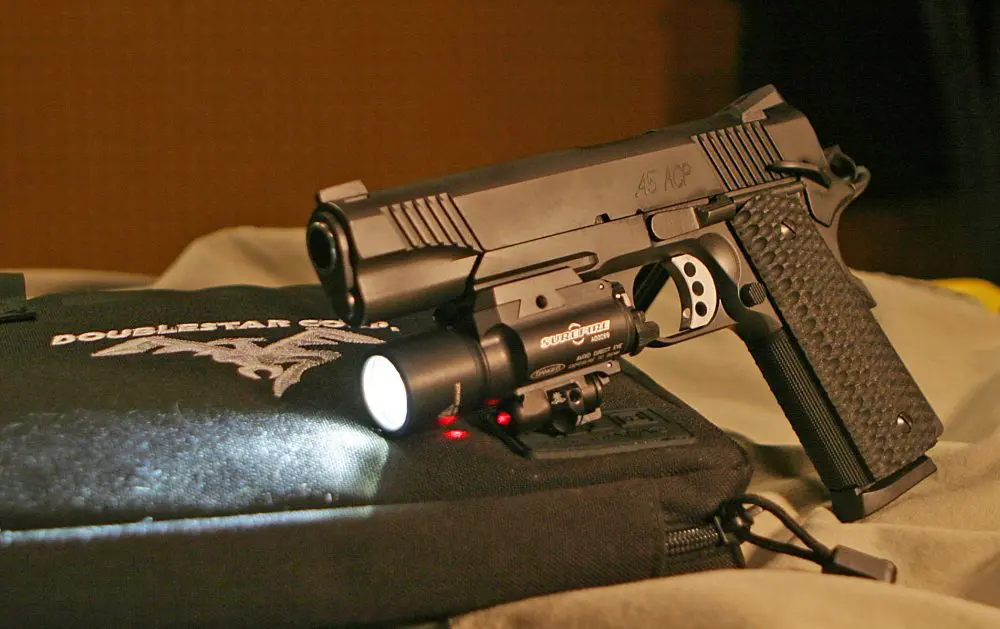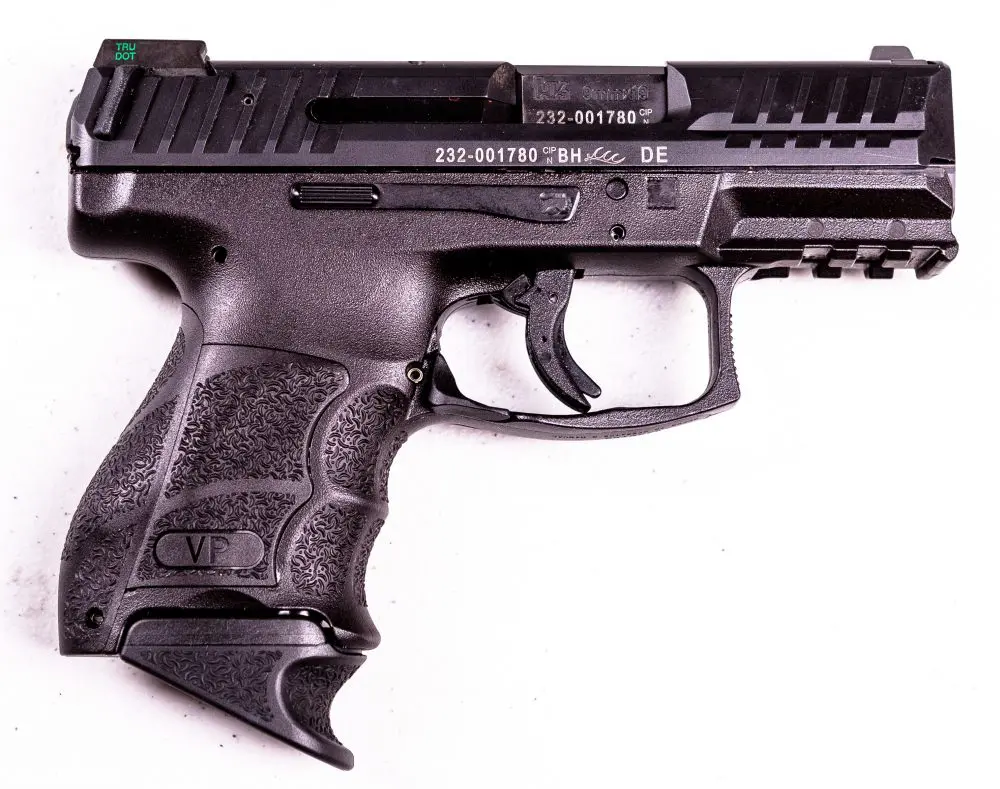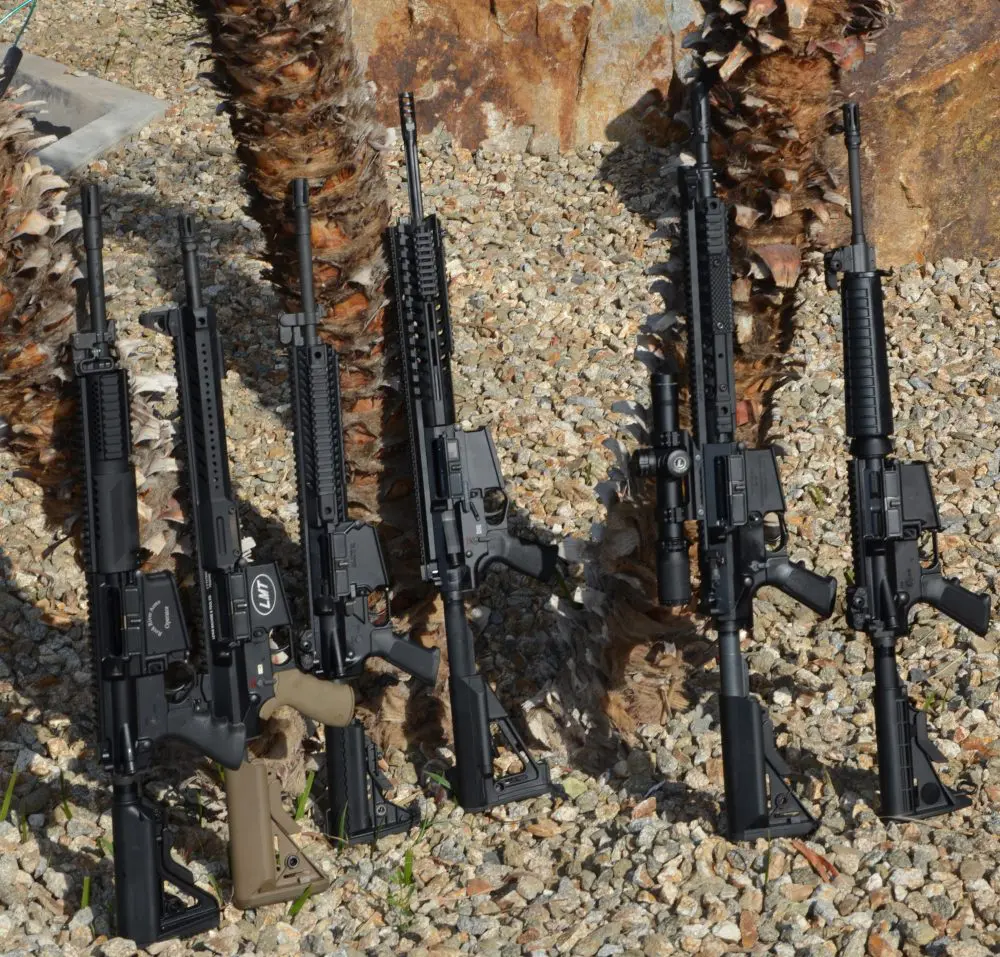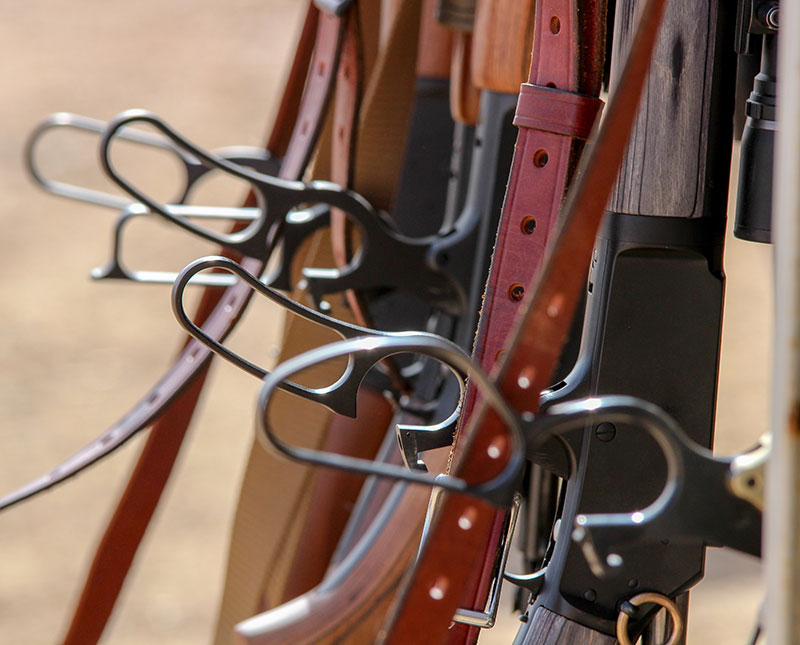
If you’re lucky, once in a while you get to live a dream. For an Eastern gun writer who still harbors fantasies of helping John Wayne clean up a dusty old cowtown, it was a dream: spending three days in the Arizona high desert shooting lever-action rifles with some of the best gun- and word-slingers in the business.
When you think about long guns and the American West, one thing springs to mind: the lever-action rifle. Originally developed before the Civil War, the lever-action rifle hit its heyday in the post-war decades, until technology and public fascination moved on to auto-loaders. But during a 40-year span, the lever-action, embodied by the Winchester Model 1873, was a cutting-edge weapon and often called “the gun that won the West.”
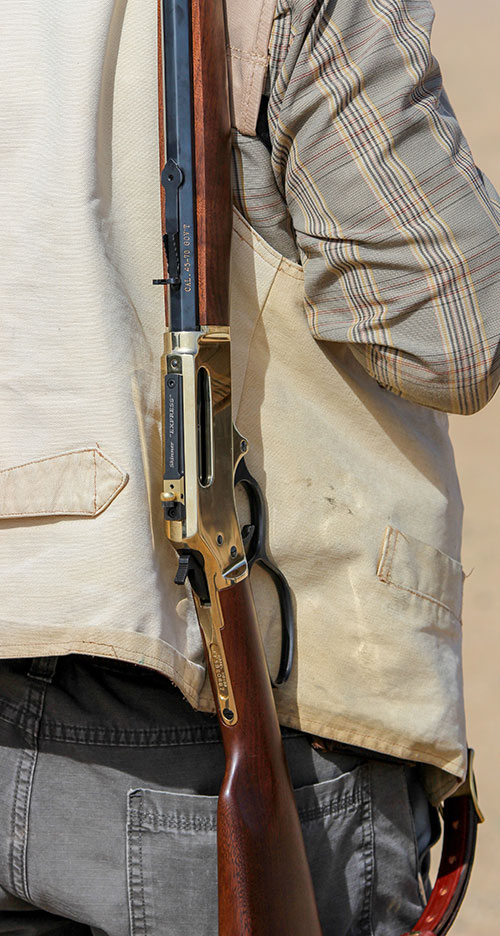
The lever gun was really the first “assault rifle” and it filled that role well with lawmen, ranchers, cowboys, gunslingers, mail riders, Indian fighters, Native Americans, vigilantes, and countless other good and bad guys.
Though the lever gun’s popularity has waned in the last century, a group of top-tier gun writers and industry representatives recently traveled to Gunsite Academy near Paulden, Arizona to learn that it remains a viable option both as a hunting and self-defense weapon.
Table of Contents
LEVER-GUN SYMPOSIUM
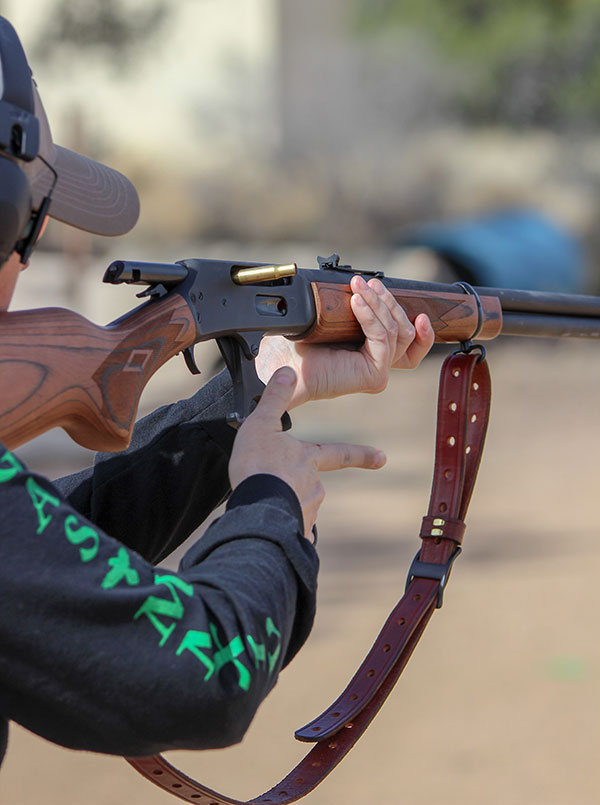
The group gathered for an invitation-only symposium called “The Craft of the Lever Gun.” Originally proposed to Gunsite boss Ken Campbell by well-known firearms journalist Richard Mann, the purpose of the class was to help rekindle lever love among gun scribes by highlighting the practical aspects of the venerable platform.
“The lever-action rifle is iconic Americana,” Mann said, “and its virtues have been lost in an age of plastic and high-tech solutions. I wanted to help gun writers better educate their readers on the capabilities of a rifle that can do most all anyone needs done!”
Like most people, Mann can’t help slipping in a little nostalgia. “The lever gun is rural America,” he said. “It’s hard winters, venison, horses, and John Wayne. And just like every other American, I have a little cowboy in me,” Mann added.
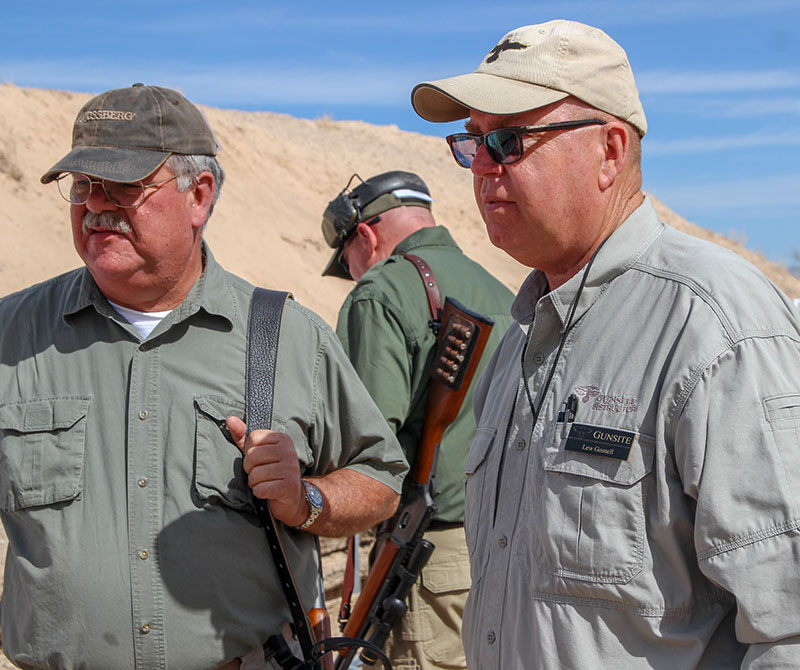
Rangemaster for the class was Lew Gosnell, a world-class competitor, law enforcement officer, and unabashed lever-gun fan. It doesn’t take much to get the deadpan Gosnell to wax poetic about the rifles.
“The action is slim and easily balanced at the receiver for one-hand carry,” he said, starting down his list. “They may be ‘slow’ to (re)load, but how many shots does it take to solve most hunting or defense situations?” Gosnell asked rhetorically.
“The typical Winchester or Marlin will shoot better than most (people) can hold it, and power is there from .357 to .45-70 and beyond,” he explained. “Like a pump-action shotgun, the lever rifle can be kept loaded with chamber empty until needed. With limited practice, the motion of shouldering the rifle while operating the action can be as quick and natural as tying your shoes.”
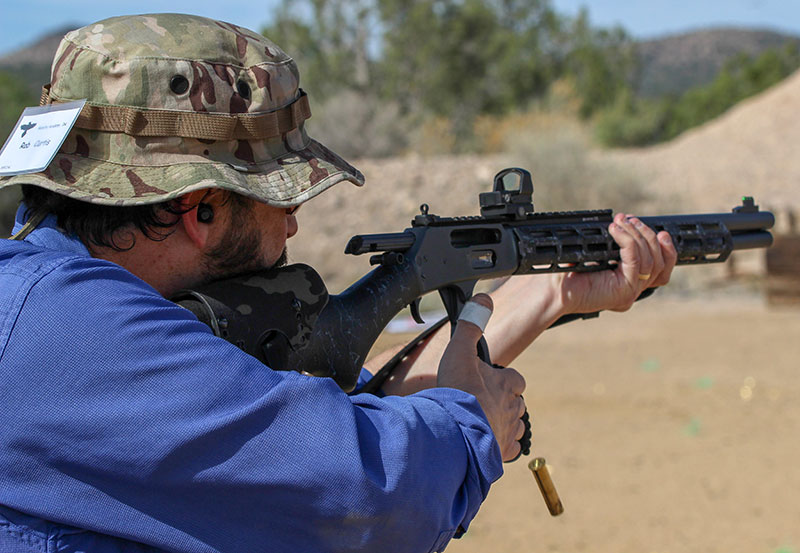
For all the reasons Gosnell listed and the participants learned firsthand, lever guns really are a viable defensive weapon. As an added benefit, the “cowboy” gun maintains a far lower profile and is less likely to inspire hysterical fear and panic than the more common modern “black rifle.” In some locations such as Kalifornia, it remains a good choice for an effective defensive rifle.
Gosnell added to the list one final benefit you’ve probably heard before: “Lastly, they look neat. They call back to the lone frontiersman setting a horse. John Wayne hailed his ride with one in Stagecoach, and that was that!”
Meanwhile, back at the Ranch (Gunsite, that is), rifles were sighted in on the morning of Day One, then the assembled hombres got down to business after lunch.
DRILLS AND MALFUNCTIONS
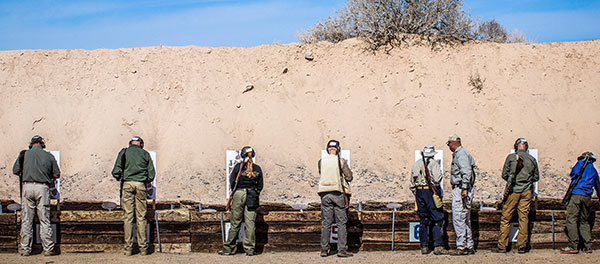
The first drills were simple enough—at least for the majority of shooters. For this writer, things went quickly awry, highlighting a major consideration when shooting the lever gun: malfunctions.
My gun simply didn’t work. I won’t mention the manufacturer because the stock firearm, in venerable .35 Remington caliber, had undergone extensive modification by a renowned and reputable gunsmith. It was a beautiful gun with an incredibly smooth trigger and it grouped very well … or at least it did when it fired. Unfortunately, every string of three to five rounds included at least one misfire, sometimes several. All the assembled experts proposed various fixes until we managed to terminally “fix” the gun and render the whole issue moot.
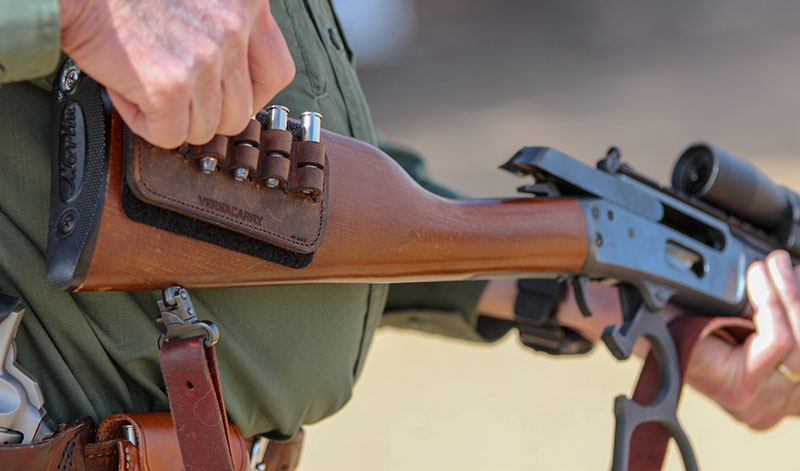
This highlights a common difficulty with the lever-action rifle. By the nature of their complex design, the guns can be somewhat finicky when mixed with desert dust, a lack of (or too liberal) lubrication, untried ammunition, and user error in the form of “short stroking.” Several attendees had weapon problems, and most were traced back to one of the above-listed causes rather than failure of the design itself.
This isn’t an indictment of lever guns but a simple acknowledgment that they have quirks like any other weapon system. If you keep the gun clean, use familiar ammunition, and make certain to fully work the action, you’ll generally have no problems.
BACK ON TRACK
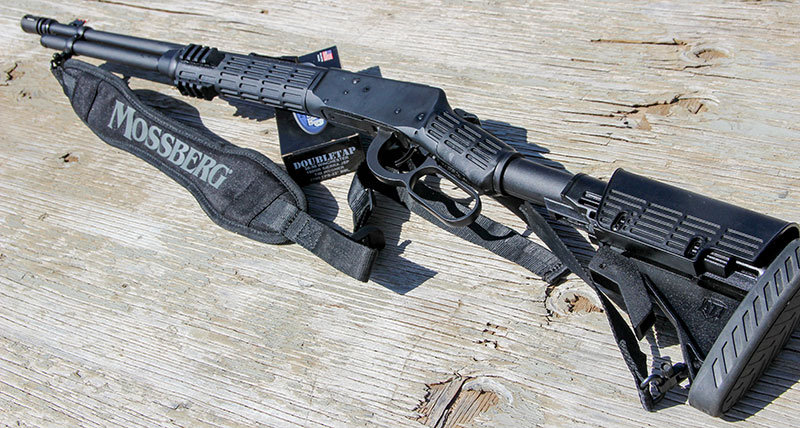
I eventually borrowed a Mossberg Model 464 and a supply of ammunition graciously provided by Mike McNett of DoubleTap Ammunition. Though I personally didn’t care for this “tactical” lever gun, it shot very well. In fact, despite middling shooting skills, the well-thought-out gun allowed me to place second in one practice competition. That’s not a humble-brag but simply an indication of how well the Mossberg lever performs.
The remainder of the event was a mixture of square-range drills, positional shooting, and outdoor simulator work, culminating in a series of shoot-offs. After three intensive days, the group walked away with a new appreciation for the extensive virtues of the lever gun. In fact, several participants jumped squarely on the lever-gun bandwagon, this writer among them.
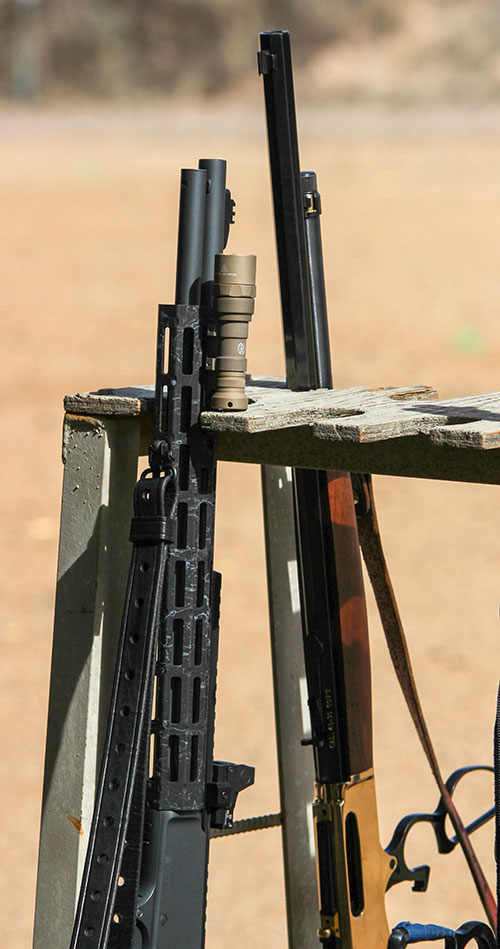
At the end of the day, I squinted against the hot Arizona sun and looked skyward while walking off the line. Here on the sagebrush home range of the Earp brothers, I was kicking up dust and taking names with a firearm originally designed in the 19th century. From a cloud that strongly resembled a sorrel gelding, I’m pretty sure I saw John Wayne smiling down.
Who could ask for more out of a shooting class—or a rifle?
SOURCE
GUNSITE
(928) 636-4565
www.gunsite.com

